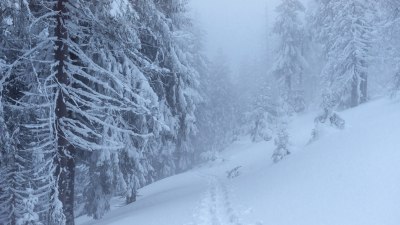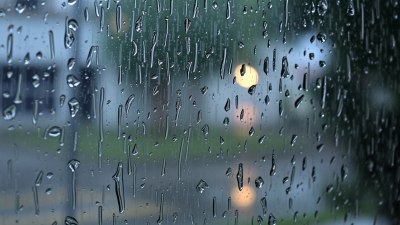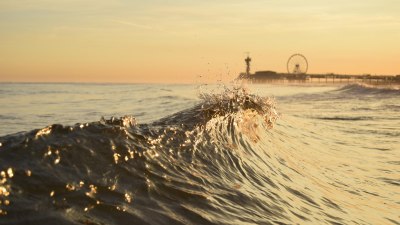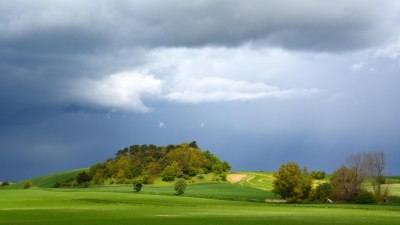What Are Fallstreak Holes The Giant Gaps in Clouds Explained
Discover the fascinating phenomenon of fallstreak holes, their formation, and why they create stunning gaps in clouds.

Fallstreak holes, also known as hole-punch clouds, represent one of nature's most intriguing atmospheric phenomena. They manifest as circular or elliptical gaps in cloud formations, often surrounded by wispy tendrils of cloud. These captivating structures raise curiosity about their formation, appearance, and the science behind them. In this article, we delve into what fallstreak holes are, how they are formed, and the circumstances under which they appear.
Understanding the Basics of Fallstreak Holes
At their core, fallstreak holes are created when supercooled water droplets in high-altitude clouds suddenly freeze and fall, creating a void in the cloud where the water droplets used to be. Typically found in altostratus or cirrostratus cloud types, these occurrences can often be a dramatic visual spectacle. The phenomenon is most readily observed in colder climates, but can occur anywhere under the right conditions.
The Science Behind Their Formation
The formation of fallstreak holes involves a few critical ingredients. First, the presence of supercooled water droplets is essential. Supercooled droplets can exist in liquid form at temperatures below freezing because they lack the necessary nucleation points to freeze. This state is unstable, and any disturbance, such as an airplane flying through these clouds or a change in temperature, can prompt the droplets to freeze suddenly. Once freezing occurs, a cascade effect may take place where adjacent droplets also freeze and fall, enlarging the gap in the clouds.
Ice Crystals and Their Role
When the supercooled droplets freeze, they form ice crystals, which can sometimes fall several thousand feet. As these ice crystals descend, they may evaporate before they reach the ground, leading to a visually stunning observation with clear skies below and a chaotic structure of clouds above. This phenomenon creates striking contrasts, as observers witness both the piercing blue of the sky and the alluring white of the ice-filled clouds.
Conditions for Observing Fallstreak Holes
Fallstreak holes generally occur in specific atmospheric conditions. They can be seen when there is a layer of supercooled water sitting atop warmer air, a situation common on the leading edge of cold fronts. Other factors, such as the presence of aircraft, play a significant role in their development. When jets fly through these layered clouds, they can disrupt the equilibrium of supercooled droplets, facilitating the freezing process. As a result, flying at high altitudes can often lead to the formation of fallstreak holes, contributing to their appearance around busy flight paths.
Different Types of Clouds Exhibiting Fallstreak Holes
While fallstreak holes are most commonly associated with altostratus and cirrostratus clouds, they can also manifest in other cloud types under particular conditions. Each cloud type provides a unique backdrop for these holes, enhancing their visual appeal. For example, altostratus clouds create vast, gray sheets across the sky, providing an impressive contrast when fallstreak holes punctuate them. In contrast, cirrostratus clouds often form a luminous halo around the sun or moon, making the gaps even more visually striking.
Comparisons to Other Atmospheric Phenomena
Fallstreak holes can sometimes be confused with other meteorological occurrences, such as lenticular clouds or various types of cloud optical phenomena like halos. However, the formation mechanisms and visual characteristics of fallstreak holes distinguish them from these other clouds. Unlike haloes, which display light refraction through ice crystals, fallstreak holes are primarily created through the freezing of supercooled droplets, highlighting their unique nature.
Photography and Fallstreak Holes
The majestic appearance of fallstreak holes often beckons photographers to capture their beauty. These formations are particularly appealing during sunrise or sunset when the light creates dramatic contrasts and highlights the edges of the remaining clouds. For photographers aiming to capture fallstreak holes, it’s essential to position themselves where the gaps are visible and where the sun can illuminate the clouds below. Utilizing wide-angle lenses can help capture the full expanse of the phenomenon while ensuring the background is adequately represented.
Fallstreak Holes and Climate Change
Understanding fallstreak holes may also shed light on the wider implications of climate change on cloud formations and weather patterns. As global temperatures rise, the frequency and characteristics of cloud formation are likely to alter. Research into clouds and their behaviors contributes valuable insights into how climate change is reshaping our atmosphere. Alterations in cloud types can directly affect precipitation patterns and may change how and when phenomena like fallstreak holes occur.
Interesting Facts About Fallstreak Holes
1. The first recorded observation of fallstreak holes occurred in the 1940s, although they likely existed long before this time. 2. Fallstreak holes can also create dramatic vistas known to align with cultural or spiritual beliefs, often described in folklore and stories surrounding weather phenomena. 3. The phenomenon has inspired artists and filmmakers, leading them to capture the beauty and intrigue of fallstreak holes. 4. While generally harmless, they can indicate significant weather changes, sometimes signaling incoming storms or alterations in flight patterns for aviators.
The Final Word on Fallstreak Holes
Fallstreak holes are a remarkable example of nature's wonder, showcasing the complexities of our atmospheric environment. Understanding their underlying mechanisms not only enriches our knowledge of weather patterns but also highlights the delicate balance of Earth’s climate systems. The sight of these surreal gaps in the clouds invites awe and appreciation for the natural world, prompting observers to take a moment to marvel at the beautiful intricacies of weather phenomena.
Encouraging Exploration and Observation
As science continues to study and uncover the myriad phenomena found in our atmosphere, embracing the wonder of fallstreak holes and similar occurrences can inspire a deeper appreciation of nature. Whether you are a casual observer or an aspiring meteorologist, keeping an eye to the sky can unveil the magic of weather and the surprising beauty of our shared environment. Learning about these unique weather phenomena can trigger greater curiosity about the atmospheric sciences and the ongoing changes that our planet experiences.











